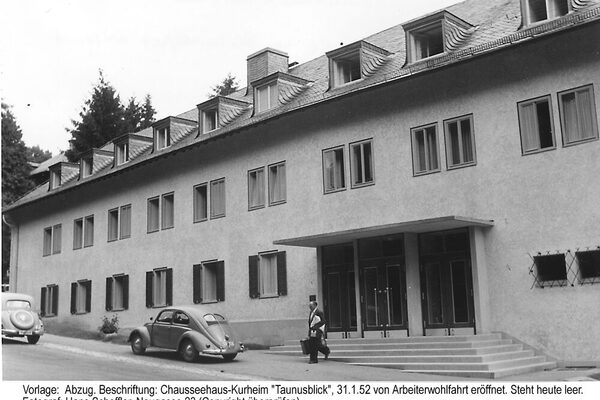Workers' Welfare Association Wiesbaden (AWO)
In December 1922, under the leadership of Philipp Holl, the local committee of the Wiesbaden Workers' Welfare Association was established, whose tasks included orphan care, childcare, mothers' recreation, school children's meals and counseling.
After 1933, the Workers' Welfare Association became a bone of contention between the Nazi Women's Association, the German Labor Front and the National Socialist People's Welfare Association (NSV), which ultimately confiscated its assets.
After the end of the war, Philipp Holl, Moritz Lang and his wife Anny Lang as well as the communist Hans Quarch, a survivor of Dachau concentration camp, rebuilt the Workers' Welfare Association. Soup kitchens and school meals, children's recreation (Berlin children) and sewing rooms characterized the first post-war years. The official re-approval of the Workers' Welfare Association in Wiesbaden took place on 25.01.1946. Moritz Lang (SPD) and Hans Quarch (KPD) shared the management. The women's committee headed by Anny Lang was of great importance.
From 1958, the Workers' Welfare Association used the Unter den Eichen site, where a day care center for the elderly was set up in 1961, a kindergarten in 1968 and a senior citizens' hotel until 2010: the "Anny Lang House".
At present, the focus is on childcare, care for the elderly, advice and support for women and migrants; the association has also set up its own women's shelter. 1,200 members join 300 full-time employees and numerous volunteers.
Literature
Eckhardt, Dieter and Hanna: Self-help in times of need. The emergence of the Wiesbaden Workers' Welfare Association from the misery of the two world wars. Edited by: AWO Kreisverband Wiesbaden, Wiesbaden 2009.
Reimuth, Bruno; Richter, Hannelore: 70 Years of Workers' Welfare in Wiesbaden, Wiesbaden 1993.
